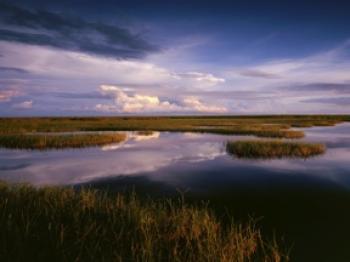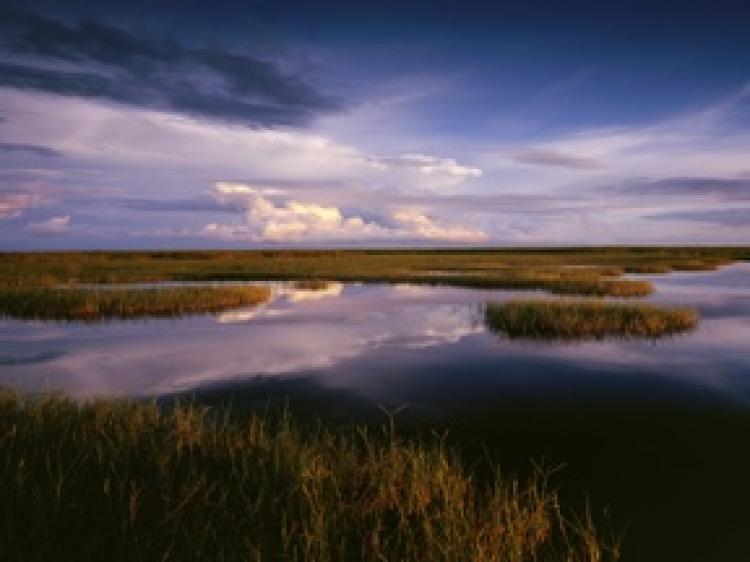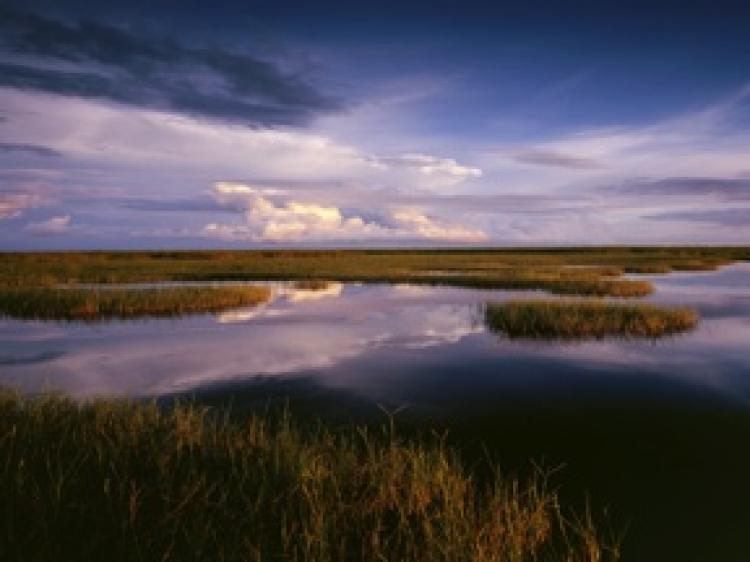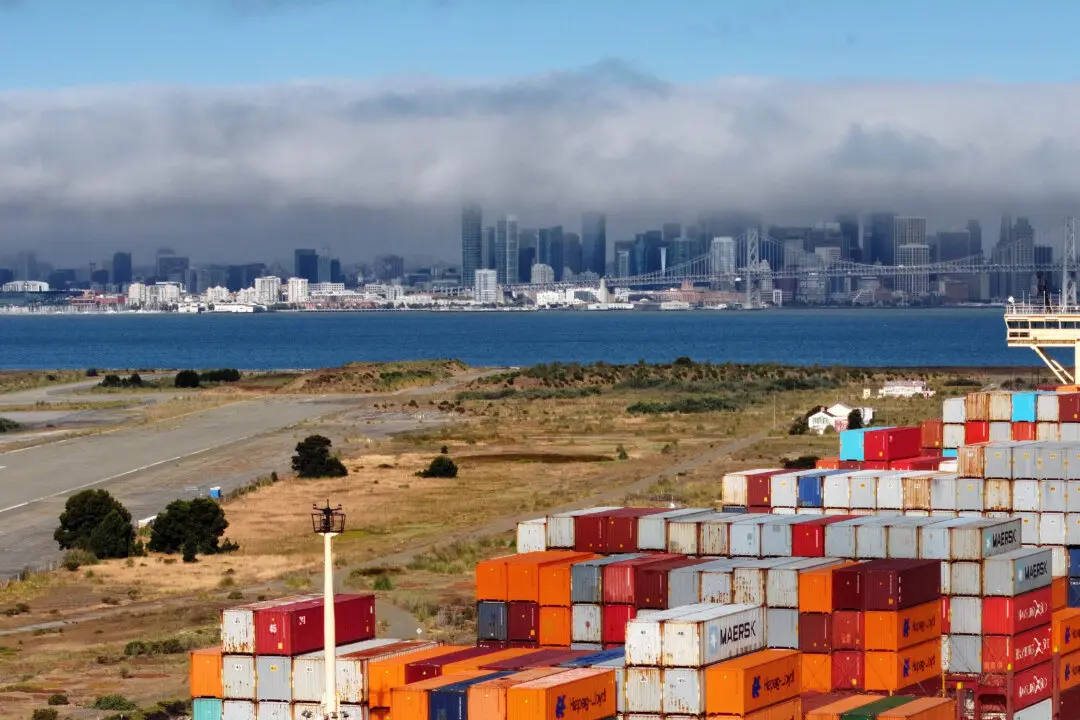A major wetland restoration project to improve water flow in Florida’s Everglades gained further support Wednesday. The U.S. Department of the Interior released a report recommending the Tamiami Trail bridging project be expanded another 5.5 miles.
The Tamiami Trail cuts east-west across the Everglades, effectively damming the water flow coming south to Everglades National Park and Florida Bay. Turning sections of the roadway into a bridge to allow surface water to flow south has long been in the works. In December, with an infusion of federal funding, the project to elevate a mile of the roadway finally broke ground. Now the government is recommending another 5.5 miles be elevated to improve the flow of surface water. Money for the $330 million dollar project has yet to be authorized by Congress, but Secretary Salazar already committed $360 million in economic stimulus money and promised another $278 million in 2010.
The same day the recommendation was released, the Everglades Foundation hosted a summit panel discussion mediated by Tom Brokaw to discuss conservation efforts and progress. Held at Washington D.C.’s Newseum, the panel included local and federal water and conservation officials as well chairman of the Everglades Foundation Paul Tudor Jones II and senior foundation scientist Thomas Van Lent.
“At the end of the day the environment gets attention as long as it’s an economic issue, so the fact that the environment and the economy are intertwined that’s really how you get things done,” said Everglades Foundation Chairman Paul Tudor Jones. “We can appeal to people’s altruistic motives all we want to, but when there is 9.7 percent unemployment that is going to carry the headline of the day.”
Jones explained preliminary findings of a study commissioned by the foundation found that an investment of $11 billion in restoration efforts today will yield $33 billion in benefits over the course of the next 40 years. The study also found that restoration efforts have the potential to create 330,000 jobs.
This he said “is the single most compelling reason why we need to make difficult political decisions to go forward with restoration.” Economically the Everglades “are the single biggest engine in South Florida,” he said.
Everglades conservation efforts have gained momentum in recent years and many on the panel credited cooperation and partnerships among government, advocacy groups, and local interests.
“Only by coming together in the way of partnerships that I think that we can forge the resources and forge the commitment to carry out [restoration efforts]” said Gary Guzy, deputy director and general counsel of the Council on Environmental Quality.
The surrounding region is home to 7 million people who rely on the aquifers of Everglades to store their drinking water.
Before human intervention the whole Everglades ecosystem was twice the size of New Jersey. At that time, the Everglades was essentially an enormous 40-mile-wide river flowing from Lake Okeechobee to Florida’s southern tip that moved only a few feet per day. Roads, canals, farming, and housing developments chopped up and shrank the wetlands over time, interrupting the flow of water. The River of Grass, as it is often called, is home to an array of wildlife from alligators, fish, turtles, to panthers, otters and numerous species of birds. Now some are threatened and some endangered.
Now with greater federal support and funding, conservation projects look to be moving forward after years of stagnation. With proper leadership, successful restoration is possible, said foundation scientist Thomas Van Lent.
The Tamiami Trail cuts east-west across the Everglades, effectively damming the water flow coming south to Everglades National Park and Florida Bay. Turning sections of the roadway into a bridge to allow surface water to flow south has long been in the works. In December, with an infusion of federal funding, the project to elevate a mile of the roadway finally broke ground. Now the government is recommending another 5.5 miles be elevated to improve the flow of surface water. Money for the $330 million dollar project has yet to be authorized by Congress, but Secretary Salazar already committed $360 million in economic stimulus money and promised another $278 million in 2010.
The same day the recommendation was released, the Everglades Foundation hosted a summit panel discussion mediated by Tom Brokaw to discuss conservation efforts and progress. Held at Washington D.C.’s Newseum, the panel included local and federal water and conservation officials as well chairman of the Everglades Foundation Paul Tudor Jones II and senior foundation scientist Thomas Van Lent.
“At the end of the day the environment gets attention as long as it’s an economic issue, so the fact that the environment and the economy are intertwined that’s really how you get things done,” said Everglades Foundation Chairman Paul Tudor Jones. “We can appeal to people’s altruistic motives all we want to, but when there is 9.7 percent unemployment that is going to carry the headline of the day.”
Jones explained preliminary findings of a study commissioned by the foundation found that an investment of $11 billion in restoration efforts today will yield $33 billion in benefits over the course of the next 40 years. The study also found that restoration efforts have the potential to create 330,000 jobs.
This he said “is the single most compelling reason why we need to make difficult political decisions to go forward with restoration.” Economically the Everglades “are the single biggest engine in South Florida,” he said.
Everglades conservation efforts have gained momentum in recent years and many on the panel credited cooperation and partnerships among government, advocacy groups, and local interests.
“Only by coming together in the way of partnerships that I think that we can forge the resources and forge the commitment to carry out [restoration efforts]” said Gary Guzy, deputy director and general counsel of the Council on Environmental Quality.
The surrounding region is home to 7 million people who rely on the aquifers of Everglades to store their drinking water.
Before human intervention the whole Everglades ecosystem was twice the size of New Jersey. At that time, the Everglades was essentially an enormous 40-mile-wide river flowing from Lake Okeechobee to Florida’s southern tip that moved only a few feet per day. Roads, canals, farming, and housing developments chopped up and shrank the wetlands over time, interrupting the flow of water. The River of Grass, as it is often called, is home to an array of wildlife from alligators, fish, turtles, to panthers, otters and numerous species of birds. Now some are threatened and some endangered.
Now with greater federal support and funding, conservation projects look to be moving forward after years of stagnation. With proper leadership, successful restoration is possible, said foundation scientist Thomas Van Lent.







